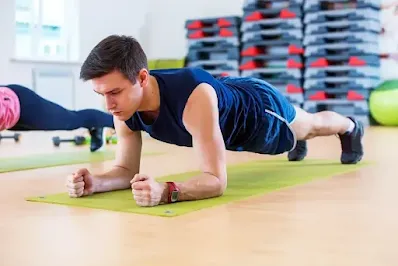Introduction:
Welcome back, fitness enthusiasts! Today, we're shining the spotlight on one of the most effective exercises for building core strength: the plank. This simple yet challenging exercise targets multiple muscle groups and offers numerous benefits beyond just a toned midsection. Whether you're a beginner or a seasoned athlete, incorporating planks into your workout routine can elevate your fitness game. Let's dive into the world of planks and explore how to do them correctly, the benefits they offer, and variations to keep your routine exciting!
What is a Plank Exercise?
The plank is a bodyweight exercise that involves holding your body in a straight, rigid position, similar to a wooden plank. It primarily engages the core muscles but also works the shoulders, arms, glutes, and legs. The simplicity of the plank makes it accessible to everyone, while its effectiveness lies in the challenge of maintaining proper form and balance.
How to Perform the Perfect Plank
Starting Position:
- Begin in a push-up position, with your hands directly under your shoulders and your body forming a straight line from head to heels.
- Alternatively, you can perform a forearm plank by resting on your forearms instead of your hands. Your elbows should be directly under your shoulders.
Engage Your Core:
- Tighten your abdominal muscles as if bracing for a punch. This helps stabilize your body and protects your lower back.
Maintain Proper Alignment:
- Keep your body in a straight line, avoiding any sagging or arching of the hips. Your head should be in a neutral position, looking down at the floor.
Hold the Position:
- Hold the plank position for as long as you can while maintaining good form. Start with 20-30 seconds and gradually increase your time as you build strength.
Breathing:
- Breathe steadily and deeply throughout the exercise. Avoid holding your breath.
Common Mistakes to Avoid:
- Letting your hips drop or lift too high
- Looking up or tucking your chin too much
- Holding your breath
- Allowing your shoulders to creep up toward your ears
Benefits of Plank Exercises
Core Strength:
- Planks are one of the best exercises for strengthening the core, including the rectus abdominis, transverse abdominis, obliques, and lower back muscles.
Improved Posture:
- By strengthening the muscles that support your spine, planks can help improve posture and reduce the risk of back pain.
Increased Flexibility:
- Planks stretch the posterior muscle group, including the shoulders, shoulder blades, and collarbone, promoting flexibility.
Enhanced Balance and Stability:
- The plank requires you to maintain balance and stability, which can improve overall body control and coordination.
Full-Body Workout:
- While the core is the primary focus, planks also engage the arms, shoulders, glutes, and legs, providing a full-body workout.
Boosted Metabolism:
- Holding a plank position engages multiple muscle groups, leading to increased calorie burn and a higher metabolic rate.
Plank Variations to Challenge Yourself
Forearm Plank:
- A variation that places more emphasis on the core and is easier on the wrists. Rest on your forearms instead of your hands.
Side Plank:
- Target your obliques by turning onto one side, stacking your feet, and lifting your hips off the ground. Hold the position with your body in a straight line.
Plank with Leg Lift:
- In a standard plank position, lift one leg off the ground, hold for a few seconds, and then switch to the other leg. This adds an extra challenge for the core and glutes.
Plank with Arm Lift:
- Similar to the leg lift, but this time lift one arm straight in front of you, then switch. This variation challenges your balance and stability.
Plank to Push-Up:
- Alternate between a forearm plank and a full plank by pressing up with one arm at a time. This variation engages the chest and triceps.
Walking Plank:
- In a full plank position, "walk" your hands and feet to the side, moving in a lateral direction. This variation engages the core and shoulders while adding a dynamic element.
How to Incorporate Planks into Your Routine
Warm-Up:
- Always warm up before doing planks to prepare your muscles and reduce the risk of injury. Dynamic stretches and light cardio are great options.
Start Slow:
- Begin with short holds and gradually increase the duration as your core strength improves. Even 10-15 seconds is a great starting point.
Consistency is Key:
- Include planks in your workout routine at least 2-3 times per week. Consistency will help you build strength and endurance.
Combine with Other Exercises:
- Planks pair well with other core exercises, such as crunches, leg raises, and Russian twists, for a comprehensive core workout.
Challenge Yourself:
- As you progress, try different plank variations or add weights to increase the intensity.
Conclusion:
The plank is a simple yet powerful exercise that offers numerous benefits for your core strength, posture, and overall fitness. Whether you're just starting out or looking to spice up your routine, planks are a versatile addition to any workout plan. Remember, the key to mastering the plank is consistency and proper form. So, why not give it a try today and feel the burn in your core?
Call to Action:
How long can you hold a plank? Challenge yourself and share your time in the comments below! And if you found this post helpful, don't forget to subscribe for more fitness tips and exercises.


